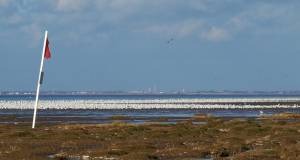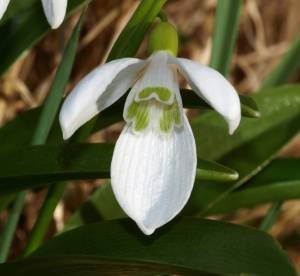Dr Phil Smith’s Wildlife Notes
February 2010
Despite the continuing cold weather, spring movements of waders and gulls became evident along the coast during February. Big tides in the first week concentrated gulls into huge roosts totalling 25-30,000 between Ainsdale and Birkdale, of which about three-quarters were Herring Gulls. However, the Ainsdale beach roost held about 2500 Common Gulls on 4th, one of the largest flocks of this species I have ever seen. Rarer species were harder to find but, as usual, a few Mediterranean Gulls accompanied the flocks. At Ainsdale, I found one on 3rd and two on 18th, but there were reports of up to four at Birkdale. Seaforth Nature Reserve also had visits from “Meds” throughout the month, a colour-ringed adult on 21st having originated in Hamburg.

Internationally important numbers of waders are also a feature of our shores. On 3rd, the Ainsdale high-tide roost held at least 12,000 Knot and 5000 Oystercatchers with smaller numbers of Bar-tailed Godwit, Grey Plover, Dunlin and Sanderling. As the tide pushes them up the beach, these birds often indulge in remarkable aerial manoeuvres, looking from a distance like great plumes of twisting smoke. These are among our most dramatic wildlife spectacles, comparable with the seabird cliffs of north Scotland or even the herds of Wildebeest on the African savannas.
Not surprisingly, Avocets returned later than in the milder spring of 2009, the first two being reported at Marshside on 21st, while Martin Mere had its earliest pair on 24th, increasing to four on 26th. The latter site also supported around 1000 Whooper Swans throughout the month, 78 being trapped for ringing on 10th. Of these, 56 were new birds, the other 22 having been ringed in previous years. Martin Mere was also graced by an American Green-winged Teal and a remarkable variety of birds-of-prey, including Hen Harrier, Sparrowhawk, Peregrine, Merlin, Short-eared Owl, Barn Owl and up to 10 Buzzards. A spectacular Red Kite also passed through on 8th.
Most notable at Marshside was a Bittern, which spent over a week at the beginning of the month stalking the Crossens salt-marsh with the usual Grey Herons. This is a bird that normally hides away in dense reed-beds but here it was mostly in full view of its many admirers. I was lucky enough to see it on two occasions.
From the middle of the month a large flock of about 6000 Pinkfooted Geese at Plex Moss was accompanied by two Bean Geese of the race rossicus,whichbreeds in the west Siberian tundra. This goose always attracts a good deal of interest, first because it is relatively rare in Britain but also because it is a challenge to find among the Pinkfeet, the main differences being that the Bean has an orange band on the bill and orange legs, instead of pink.
The sea-watchers reported lots of divers, grebes and scoters off Formby Point early in the month, including up to five of the uncommon Velvet Scoter. Unfortunately, on the two occasions I had a look from the high dunes only Common Scoters were to be seen as little more than black dots on the horizon, even with a powerful telescope.
Interesting plant life is thin on the ground in February but non-native Snowdrops can usually be guaranteed to brighten up a winter’s day. However, they were much later than usual, the populations at Hesketh Road, Marshside being mostly still in bud on 7th. Here, you can find several varieties of the common Snowdrop (Galanthus nivalis) and also the much rarer Green Snowdrop (Galanthus woronowii), which has broader, shiny green leaves.

